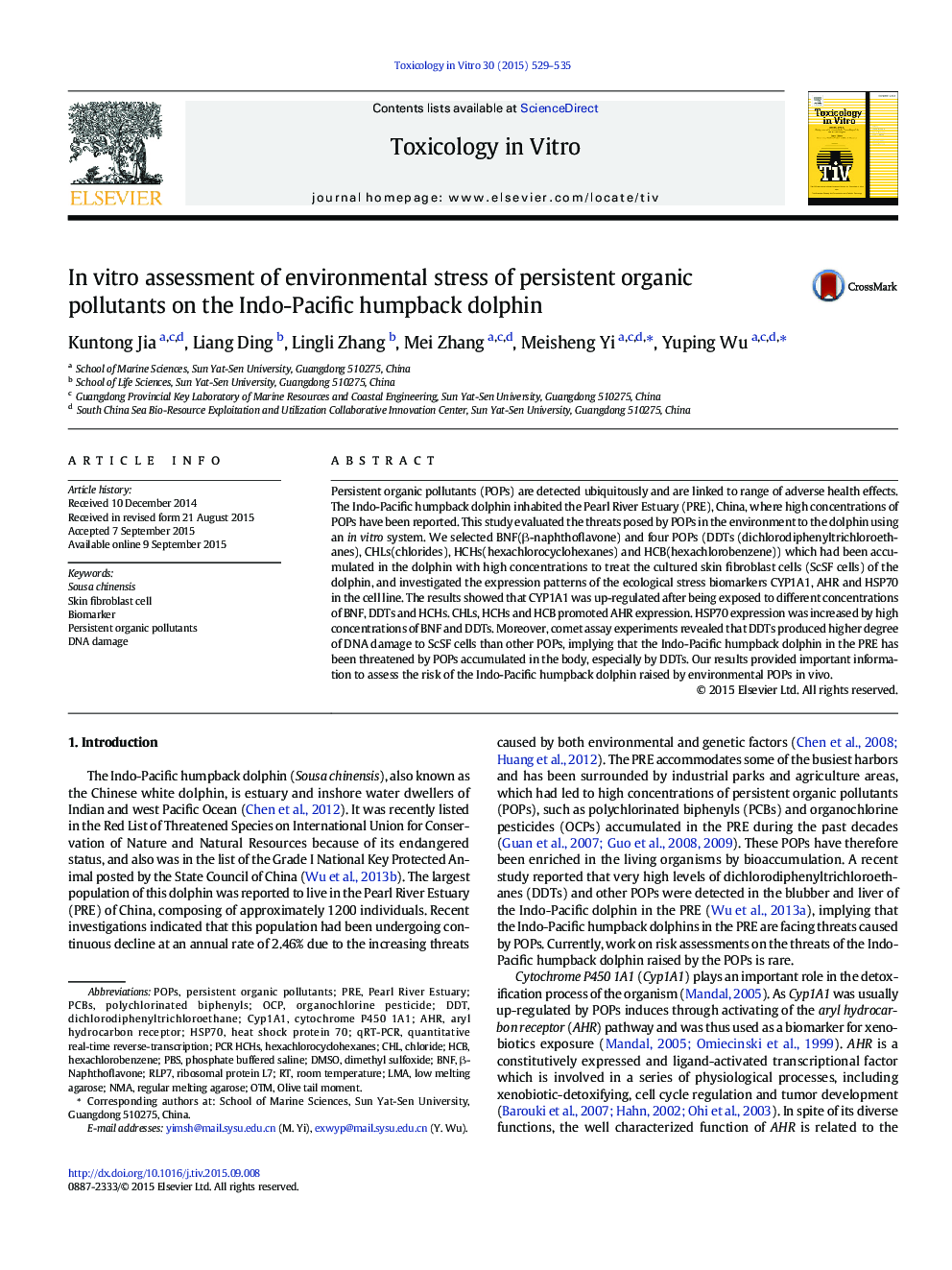| کد مقاله | کد نشریه | سال انتشار | مقاله انگلیسی | نسخه تمام متن |
|---|---|---|---|---|
| 2602449 | 1562715 | 2015 | 7 صفحه PDF | دانلود رایگان |
• An in vitro system to evaluate toxicological effects on the Chinese white dolphin
• CYP1A1, AHR and HSP70 are good biomarkers for POPs in the Chinese white dolphin.
• The Chinese white dolphin in the PRE was under threats of POPs, especially DDTs.
Persistent organic pollutants (POPs) are detected ubiquitously and are linked to range of adverse health effects. The Indo-Pacific humpback dolphin inhabited the Pearl River Estuary (PRE), China, where high concentrations of POPs have been reported. This study evaluated the threats posed by POPs in the environment to the dolphin using an in vitro system. We selected BNF(β-naphthoflavone) and four POPs (DDTs (dichlorodiphenyltrichloroethanes), CHLs(chlorides), HCHs(hexachlorocyclohexanes) and HCB(hexachlorobenzene)) which had been accumulated in the dolphin with high concentrations to treat the cultured skin fibroblast cells (ScSF cells) of the dolphin, and investigated the expression patterns of the ecological stress biomarkers CYP1A1, AHR and HSP70 in the cell line. The results showed that CYP1A1 was up-regulated after being exposed to different concentrations of BNF, DDTs and HCHs. CHLs, HCHs and HCB promoted AHR expression. HSP70 expression was increased by high concentrations of BNF and DDTs. Moreover, comet assay experiments revealed that DDTs produced higher degree of DNA damage to ScSF cells than other POPs, implying that the Indo-Pacific humpback dolphin in the PRE has been threatened by POPs accumulated in the body, especially by DDTs. Our results provided important information to assess the risk of the Indo-Pacific humpback dolphin raised by environmental POPs in vivo.
Journal: Toxicology in Vitro - Volume 30, Issue 1, Part B, 25 December 2015, Pages 529–535
